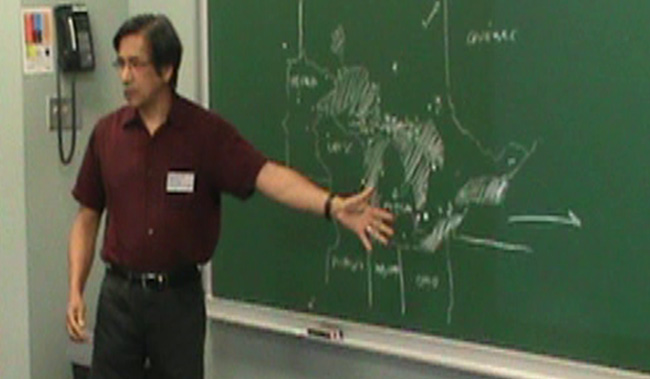Language is the glue that brings us together

By Margaret Hele
SAULT STE. MARIE – More than 50 native language speakers and teachers gathered at Algoma University in early August to discuss a flawed system that only requires 20 minutes a day for elementary students.
Participants at the Native Language Teachers Gathering learned that 10,000 hours are required to learn to speak a language. Studies have also indicated that children who have acquired a second language obtain better marks overall.
Associate Professor at the University of Wisconsin-Milwaukee Bernie C. Perley, used a map of the Great Lakes area which showed where the majority of those gathered had journeyed from and acknowledged the nuances of our language and the commonality of the native languages.
Perley says that the various ways of speaking are not considered a dialect.
“It is just a different way of speaking. It’s their variety of the language,” said Perley.
After talking about the patterns and the ways our language works, he strongly recommended that the teachers think about how we can create our own linguistics sovereignty .
“Language is the glue that brings us together; that makes us experience something meaningful to all of us,” said Perley who has taught courses related to Linguistic Anthropology.
Garden River First Nation citizen Barbara Nolan expressed her firm belief in the immersion style of teaching. When relating stories in Anishinabemowin, Nolan uses facial expressions, body and hand movements and drawings or pictures to provide understandable language to her listeners.
Teachers brought forth their concerns about the lack of visual aids to assist the teachers. Limited resources that teachers and school boards have are not always readably available for use at their school. Some teachers get their language resources online – such as nursery rhymes and other songs that have been translated into a native language.
The gathering provided a forum for sharing of ideas and practices that are currently being used to promote and revitalize the Native language. The group‘s discussions and insight led to the decision that it was necessary to create a document requesting government support for the development of curriculum guidelines, teacher training and sufficient opportunities to attain proficiency .


